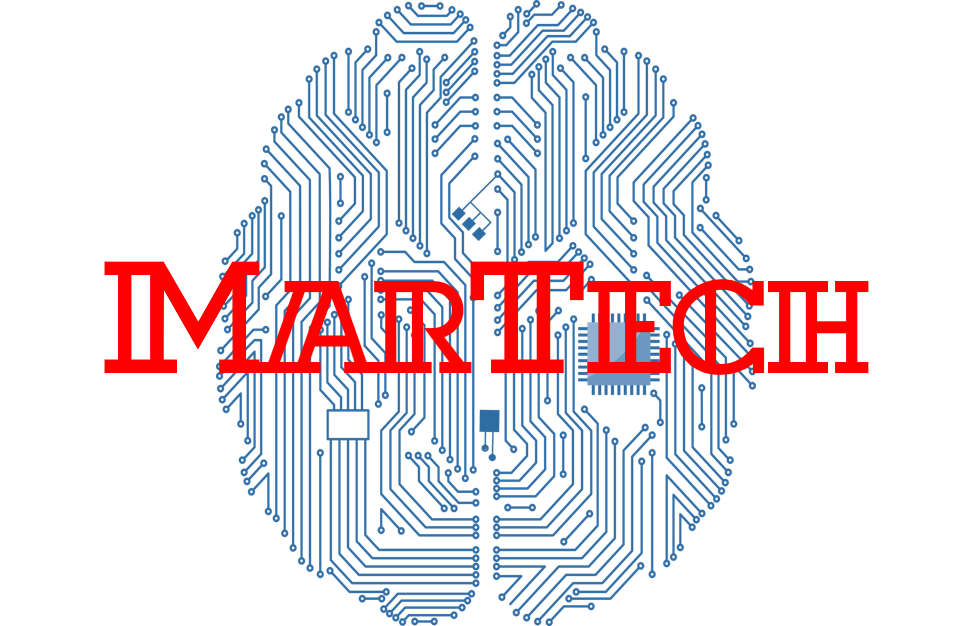In the “contactless” world created by the coronavirus pandemic, virtually reaching out to consumers has never been more important. Nevertheless, no brand or company wants to waste precious marketing dollars on consumers unlikely to want or need what they are promoting. Fortunately, there is plenty of data to help brands figure out who might be interested in the products they are selling — if marketers know how to use it. Albizu Garcia (@albizu), Co-Founder and CEO of Gain, notes, “We’ve entered an era in which marketers are being bombarded by volumes of data about consumer preferences. In theory, all of this information should make grouping users and creating relevant content easier, but that’s not always the case. Generally, the more data added to a marketer’s workflow, the more time required to make sense of the information and take action.”[1] In fact, marketers generally have access to so much data they require the assistance of cognitive technologies — technologies often discussed using the umbrella term “artificial intelligence” (AI). The most often discussed and used cognitive technology is machine learning (ML).
Why marketing and sales need cognitive technologies
The “machine” in the term “machine learning” is obviously a computer and its associated programs. John Allen, Director of Global SEO at RingCentral, explains, “By ‘machine’ in this context, we mean an algorithm. By ‘learning’, we mean taking — ideally — a large volume of data and using it for specific predefined tasks. Typically, machine learning algorithms analyze sets of data and identify patterns. They then use those patterns to generate conclusions or take defined actions. Machine learning algorithms get smarter as they go along. The more data the algorithms analyze, the better their predictions, conclusions, or actions.”[2] Every cognitive technology uses some form of machine learning. Why should marketers care about cognitive technologies. Allen explains, “The MarTech solutions of the future — and the present — will almost all exhibit elements of AI. … Machine learning is already getting leveraged in a broad array of MarTech solutions. From webinar services to chatbots, the element of AI is making all kinds of software or tools smarter.”
As Allen notes above, for cognitive technologies to work, they need lots of good data. Gregg Johnson (@gregg_johnson), CEO of Invoca, explains why it’s important to have the right data in a timely fashion. “The events of spring 2020 have turned marketers’ worlds upside down,” he writes. “In light of an unprecedented health and economic crisis, teams scrambled to adjust their advertising messages, campaigns, and offers. They could no longer rely on previous assumptions about their customers, including what, why, and how they buy. In a matter of days, stores closed, e-commerce sales ramped up, and contact center interactions exploded. Meanwhile, media consumption changed as more people began working from home, spending more time online and watching TV, and less time interacting in person. Rapid change is the new normal, and more than ever, marketers need to make decisions quickly that are nonetheless anchored in data.”[3] To get started, he recommends starting “with the simplest dataset needed to make an informed business decision and build a virtuous feedback loop between data, insight, and action.”
Sales and marketing teams are often separated and occasionally find themselves involved in internecine warfare. The staff at Marketo notes, “Sales and marketing misalignment is extremely common, and companies with divided sales and marketing teams that function separately are putting themselves at a disadvantage.”[4] They go on to note, “The silos between sales and marketing departments are a long-standing issue throughout every industry. The problem with misaligned sales and marketing teams is the inefficient processes that arise, ultimately wasting time creating content without a clear objective.” Sharing data and cognitive technologies can help get both groups cooperating rather than fighting. Haggai Levi (@hlevi), co-founder and CEO of SetSail, insists, “Sales organizations are especially well-positioned to benefit from AI and machine learning augmentation.”[5] He adds, “In today’s era of digital transformation, high-level sales performance requires a complementary combination of machine and human intelligence. Technology solves for the tasks that humans aren’t good at or can’t do, like synthesizing vast amounts of customer data rapidly — an analysis that can empower decision-makers with data-driven insights, accelerate learning, and build a comprehensive understanding of customer behaviors.”
Leveraging cognitive MarTech
Jason Hall (@5Channels), Founder and CEO of FiveChannels, calls cognitive MarTech “AI Marketing.” He explains, “AI marketing is a method of leveraging technology to improve the customer journey. It can also be used to boost the return on investment (ROI) of marketing campaigns. This is accomplished by using big data analytics, machine learning, and other processes to gain insight into your target audience. With these insights, you can create more effective customer touch points. Whether you’re engaging in email marketing or providing customer support, AI eliminates much of the guesswork involved in customer interactions.”[6] Of course, big data analytics begins with data and, because data has associated costs, Johnson suggests that marketers should “start small, prove business impact with smaller wins, and then make a stronger case for integrating new data sources.” He goes on to suggest three courses of action. They are:
1. Redefine “Digital” Data. “Whether customer interactions happen online, offline, on mobile, or all of the above, they generate digital data. Internet of Things (IoT) platforms are giving companies visibility into how their services are used — whether it is data about internet usage (in the case of a telecom provider) or total miles driven (for an insurance carrier). These usage patterns can help businesses understand if customers are using the services for which they are paying and getting the appropriate value. Contact center conversations and in-store visits are also being ‘digitized’ and represent point-of-sale insights into buying behavior. … In-store purchases and phone conversations with customers were once regarded as an ‘offline’ data black hole, as there was no way to accurately track and attribute sales to previous online behavior or marketing and advertising efforts. Marketing technology has evolved, however, and this offline data is now digital, which means it should be analyzed like any other online activity. For many businesses, this data is critical to decision-making, especially as competitive, customer, and market realities quickly evolve.”
2. Identify New Moments of Truth. “Today, there are countless micro-moments involved in the digital path to purchase, and the most significant moments of truth may not be what marketers expect. … The moments in the buying process that influence the customer’s decision to purchase, and in turn influence revenue, should be analyzed, A/B tested, and optimized.”
3. Connect Analytics to Revenue Generation. “Marketing analytics should shed light on the interactions that drive revenue — not just those that are easy to measure. … While it may be easier to measure and optimize email open-rates or website visits, marketers need insight into the conversations that are converting to sales. That means analyzing phone calls the same way as any other digital activity.”
Hall insists data and cognitive technologies should augment rather than replace marketers. “In the world of digital marketing,” he writes, “AI can streamline and optimize marketing campaigns. It can also eliminate the risk of human error. While much of the digital marketing world is still dependent on human ingenuity, an AI program might be able to generate a report using nothing but data. However, to truly connect with your customers, you’ll still need the human touch.”
Concluding thoughts
Allen concludes, “Artificial intelligence is making its presence felt across industries and disciplines. The broad array of processes under the umbrella of AI are revolutionizing fields. That includes, but is by no means limited to, MarTech. If you’re going to keep up with the modern trends of marketing, then, you must understand all things AI.” Hall adds, “Using machine learning and big data analysis, AI is able to provide businesses with deep insights into their customers. Not only will businesses be able to hyper-personalize interactions, but I imagine they’ll also be able to predict future customer behaviors based on the data collected.”
Footnotes
[1] Albizu Garcia, “3 Powerful Uses of Machine Learning in Marketing,” Entrepreneur, 26 August 2019.
[2] John Allen, “Defining AI, Machine Learning and Deep Learning for MarTech,” MarTechSeries, 15 September 2020.
[3] Gregg Johnson, “Is Your Marketing Strategy Based on the Right Data?” Harvard Business Review, 14 May 2020.
[4] Staff, “Sales and Marketing Alignment,” Marketo Engage, 2020.
[5] Haggai Levi, “AI for Sales: Friend, Not Foe,” insideBIGDATA, 30 August 2019.
[6] Jason Hall, “How Artificial Intelligence Is Transforming Digital Marketing,” Forbes, 21 August 2019.





